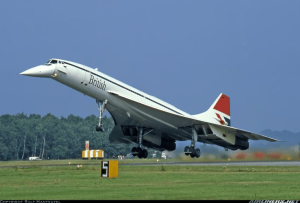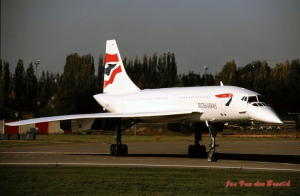How Fast Do Passenger Planes Fly?
Passenger planes typically fly at cruising speeds that vary depending on the type of aircraft. Commercial jetliners, like those from Boeing and Airbus, typically cruise at speeds between 450 to 560 miles per hour (725 to 900 kilometers per hour). This speed is known as the true airspeed and is the speed of the aircraft relative to the air it’s flying through.
Keep in mind that the cruising speed can vary based on factors such as the specific aircraft model, altitude, and weather conditions. For instance, some long-haul aircraft like the Boeing 747 or the Airbus A380 may cruise at the lower end of this range, while more modern narrow-body planes like the Boeing 737 or Airbus A320 might be closer to the upper end. Additionally, military fighter jets can fly at much higher speeds, often exceeding Mach 2, which is twice the speed of sound.
When an aircraft reaches or exceeds Mach 1, it’s said to have broken the sound barrier, and it is traveling at supersonic speeds. Mach 2 means it’s traveling at twice the speed of sound, and so on. Commercial passenger planes typically cruise at subsonic speeds, which means they fly below the speed of sound. This is why you don’t typically hear a sonic boom when flying on a commercial airliner. Also, read about The Remarkable Crimean Bridge
In contrast, military aircraft like fighter jets are designed to achieve supersonic or even hypersonic speeds, often for combat and interception purposes. They are capable of reaching Mach 2 or higher, making them much faster than typical commercial airliners.
Understanding the Basics of Passenger Planes
Passenger planes, also known as commercial aircraft, come in various shapes and sizes, ranging from small regional jets to large jumbo jets. These aircraft are designed to transport passengers from one destination to another efficiently and comfortably.
Factors Affecting Passenger Plane Speed
Several factors influence the speed of passenger planes, including the type of aircraft, its engine power, altitude, and environmental conditions. Additionally, the design of the aircraft plays a crucial role in determining how fast it can fly.
The Need for Speed
Why is speed so important in aviation? Speed not only affects the duration of a flight but also impacts fuel efficiency, which, in turn, affects ticket prices. Faster planes can cover longer distances in shorter times, making them more attractive to both airlines and passengers. For more interesting information visit our website echonewz.com
How Fast Do Passenger Planes Fly on Average?
The average cruising speed of most commercial airliners falls in the range of 500 to 575 miles per hour (805 to 926 kilometers per hour). This speed allows them to cover long distances efficiently while maintaining passenger comfort.
The Slowest Passenger Planes
Not all passenger planes are built for speed. Regional and smaller aircraft generally have lower cruising speeds, which are ideal for shorter routes and connecting smaller airports.

The Fastest Passenger Planes
On the other end of the spectrum, some passenger planes are engineered for speed. Commercial jets like the Boeing 747 and the Concorde, which is no longer in service, have held records for their high speeds.
The Role of Aircraft Design
Aircraft design is a critical factor in determining the speed of passenger planes. Streamlined bodies, advanced aerodynamics, and powerful engines are all features that contribute to faster flight.
Weather Conditions and Speed
Weather conditions can affect a plane’s speed and may lead to turbulence or delays. Pilots are trained to navigate through different weather scenarios to ensure the safety and comfort of passengers.
Airport Restrictions and Speed Limits
Airports have specific speed limits and guidelines for approaching and departing aircraft to ensure safety. These limitations can influence a plane’s speed during takeoff and landing.
Safety and Passenger Comfort
While speed is important, passenger safety and comfort are paramount. Aircraft are designed and operated with these considerations in mind, striking a balance between speed and a smooth, secure journey.
The Future of Passenger Plane Speed
As technology advances, the future of passenger plane speed holds promising developments. One exciting prospect is the resurgence of supersonic air travel. Companies like Boom Supersonic and Aerion Supersonic are working on next-generation passenger aircraft that can fly at speeds significantly faster than today’s planes. These supersonic planes have the potential to reduce travel times dramatically.

Supersonic travel offers the capability to cross the Atlantic in just a few hours or traverse the Pacific in half the time it takes today’s airliners. However, it’s important to note that these aircraft come with their own set of challenges, including noise pollution and fuel efficiency. Innovations are being pursued to address these issues and make supersonic air travel a sustainable reality.
Eco-Friendly Speed
In an era where environmental concerns are paramount, the aviation industry is striving to develop eco-friendly passenger planes without compromising speed. Researchers are exploring cleaner and more efficient propulsion systems, such as electric and hydrogen-based engines. These innovations aim to reduce carbon emissions and make air travel more sustainable.
Moreover, aerodynamics and materials are being optimized to make aircraft lighter and more fuel-efficient. The reduction in weight allows planes to achieve higher speeds while consuming less fuel, which is a win-win for both airlines and the environment.
Conclusion
In conclusion, passenger planes are engineering marvels that offer efficient and comfortable transportation. Their speed varies depending on several factors, and advances in technology continue to shape the future of air travel. Whether it’s subsonic or supersonic, these aircraft play a vital role in connecting people across the globe.
FAQs
How fast do typical passenger planes fly?
Most passenger planes cruise at speeds between 500 to 575 miles per hour.
Can passenger planes break the sound barrier?
Some supersonic passenger planes have exceeded the speed of sound in the past, but they are not currently in commercial operation.
Do different airlines have planes that vary in speed?
Yes, airlines operate a variety of aircraft with different speed capabilities to suit various routes and passenger demands.
How do weather conditions affect a plane’s speed?
Weather can lead to turbulence and affect flight speed, but pilots are trained to handle such situations safely.
What is the future of passenger plane speed?
The future may hold faster passenger planes, especially with ongoing research into supersonic travel.
